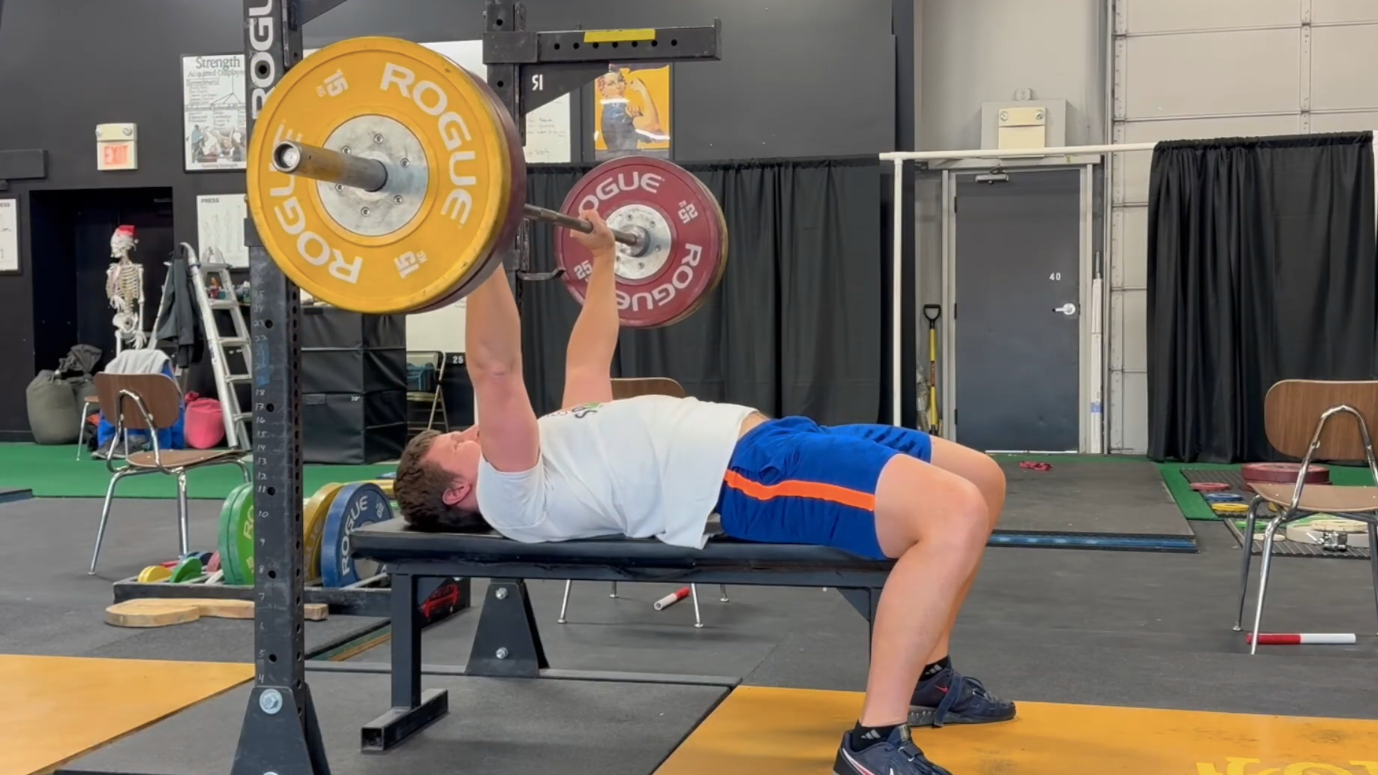How to Unrack a Heavy Bench Press By Yourself
/When the bench press gets heavy, it becomes difficult to unrack the barbell if you’re lifting alone. Hopefully, you’ve got your safeties set correctly to protect you from disaster (e.g., a bar landing on your face), but the safeties won’t provide what a good spotter does - a nice, smooth unracking process.
“Heavy” is, of course, relative - your bench press might be 105 lb, 405 lb, or something in between, but the problem remains the same. The barbell starts behind your shoulders, resting in the hooks, and you need to get the bar forward several inches until it is positioned directly above the shoulder joint.
At light weights, covering this horizontal distance is no trouble at all, but at heavy weights, it can pose quite a challenge.
The key is to not simply use your shoulders to move the barbell through that horizontal distance but instead to use the leverage provided by your entire body. With this in mind, take your grip and then follow the steps below.
Be sure to check out the included videos to see this process in action - it helps tremendously.
Step 1 - Elbows out and back slightly (Figure 1)
figure 1
Step 2 - Hips up (Figure 2)
figure 2
Step 3 - Straighten the elbows and unrack the bar (Figure 3)
figure 3
Step 4 - Hips back down to the bench as you bring the barbell into position directly above your shoulder joint (Figure 4)
figure 4
Again, be sure to check out one of the included videos to see this process in action, and as always, we hope this helps you get stronger and live better.
-Phil
PS: Whenever you want even more Testify in your life, here are some free resources:
Book a free intro and strategy session with us HERE.
Pick up a free copy of Testify’s Squat Guide: 12 Tips to Improve Your Squat Now HERE.
Get our free weekly email - containing useful videos, articles, and training tips - HERE.
Follow Testify on Instagram HERE.
Subscribe to Testify’s YouTube channel HERE.
(Some links may be affiliate links. As an Amazon Associate, Testify earns from qualifying purchases.)






